It’s fascinating (or frustrating, depending on your point of view) to see the way that people in any interest group bicker. For example, talk to any group of people who play guitar and ask them which guitar is best, and you’ll get all kinds of answers (ask them which guitarist is best if you want to see them get into a fight with each other).
The same thing happens when talking to a group of people interested in guns. You’ll get a variety of answers if you ask which firearm is best.
But what if you asked people which ammunition is best for self-defense? Would you get a variety of answers? Well, like anyone else involved with firearms, a writer named Eve Flanigan has some strong opinions on this topic. Flanigan goes after some of the assumptions people make about what is trying to be accomplished in self-defense shooting when she writes,
To defeat a common myth from the start, self defense shooting does not have killing as its purpose. The sole purpose of a lawful self defense shooting is to stop the attack. Despite what movies and TV would lead us to believe, only one in six people who sustain gunshot wounds die. Also counter to typical media portrayals, a single round fired from any caliber handgun has less than a 25 percent likelihood of stopping an attack. Odds go up substantially—to about 63 percent—with two shots.
With that in mind, Flanigan notes that there are a variety of ammunition types (hollow points, full metal jacket, etc.) along with a variety of calibers (9mm, .45, etc.). But the stopping power of hollow points, to a large extent, evens out the playing field of smaller caliber ammunition for the purpose of self-defense.
So, what ammunition should you use?
To answer this question, think about the purpose of using a firearm in self-defense and the lack of likelihood of one shot stopping an assailant. And, then, consider something else that Flanigan mentions:
Shot placement, followed by a sufficient number of rounds to deflate the assailant’s determination or physical capability, is far more important than caliber.
Think about this. What will make the difference is more likely to be whatever ammunition helps you to hit accurately and more than once (Flanigan notes that one hit with a handgun caliber of any kind “has less than a 25 percent likelihood of stopping an attack” but that a second hit increases those odds to roughly 63%!). In light of this, you need to evaluate your choice of ammunition based upon what you can use and still maintain accuracy over multiple shots and also, what kind of firearm that ammunition choice will necessitate (certain ammunition requires larger firearms than other ammunition which can make one firearm better for concealed carry versus another firearm).
So, which ammunition should you use? Use the one that allows you to take accurate shots repeatedly and allows you to conceal your weapon if you are carrying concealed. Whichever choice you choose, make sure that you get comfortable with that ammunition at the shooting range so that you can use it effectively when you need to.




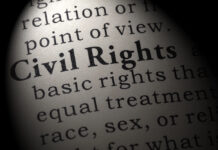
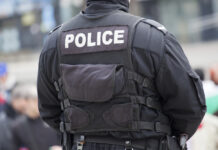

![Are Compensators Worth It? [Video]](https://preparedgunowners.com/wp-content/uploads/2025/07/Depositphotos_815431992_S-218x150.jpg)


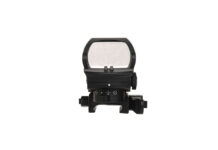

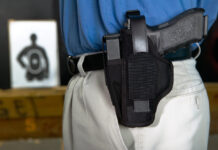
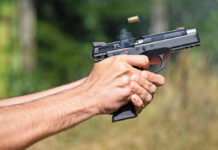
![Would-Be Robber Takes The Tueller Drill Challenge [Video]](https://preparedgunowners.com/wp-content/uploads/2025/10/Depositphotos_50626839_S-218x150.jpg)
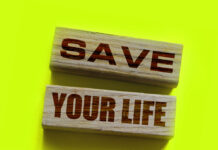
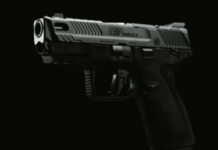
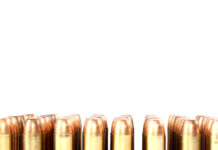
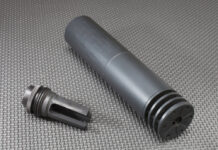
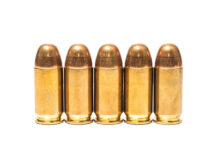
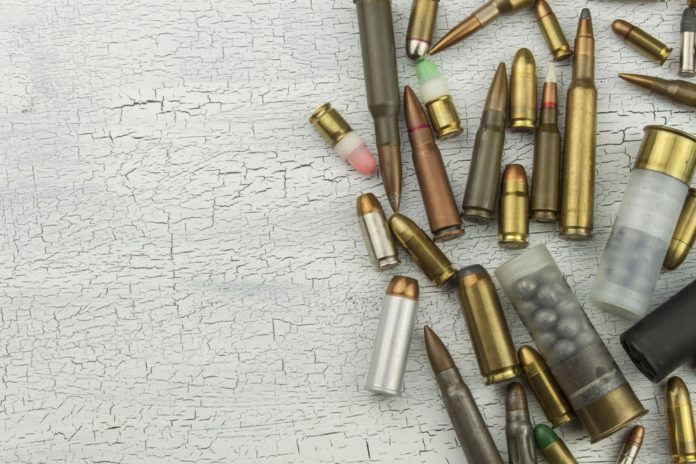










![Optic Ready vs Milled slides? [Video]](https://preparedgunowners.com/wp-content/uploads/2024/02/image-3-100x70.png)
![[Checklist] What Gear You Need To Take Pistol, Rifle & Shotgun Training Courses [Video]](https://preparedgunowners.com/wp-content/uploads/2023/07/Depositphotos_275087632_L-100x70.jpg)
![What is in Carter’s 2023 EDC? [Video]](https://preparedgunowners.com/wp-content/uploads/2023/07/Depositphotos_146856137_L-100x70.jpg)
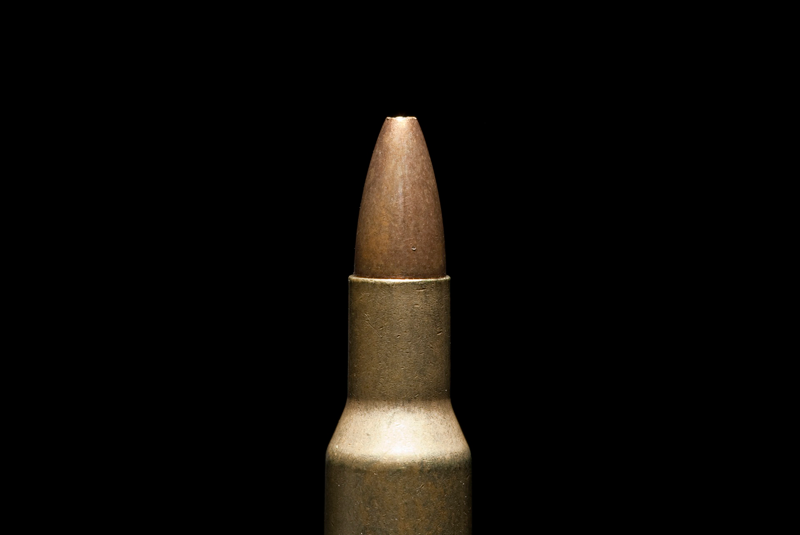
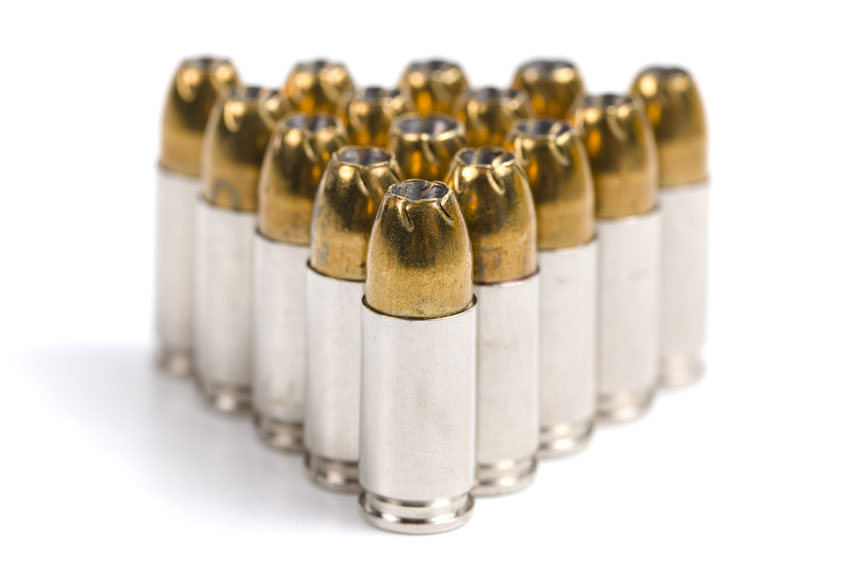
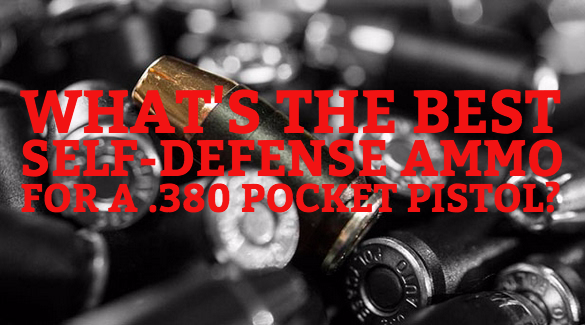
I use a 9mm or a .380. Easily concealed an they are accurate.
Whichever caliber you can fire and stay on target with the best. So many factors, more opinions than actual facts, and fanboys of not just the caliber, but the gun you carry. Some believe that the 1911in .45ACP is the end all, be all gun. Others claim the Glock, Sig, HK, Walther and on down the list is the best. Revolvers v. Auto-Loaders, it goes back and forth.
In reality, what you choose to carry needs to be based on what you can most easilly present, aim and fire in a way that the movements you make are practiced, smooth and quick. If you can’t present your weapon efficiently and quickly, your chance of survival goes down with every second that passes. The same holds true for not just your at battery position, but aquireing your sight picture and squeezing the trigger, and follow up shots until the threat is negated. If you choose a caliber that’s too heavy for your skill set, your chances of survival go down again. Some calibers produce heavy recoil and some have mild recoil. The gun firing whichever caliber needs to be ergonomic and of sufficient weight and design to offset the recoil from the cartridge you fire. Anything can be carried, but if concealing your weapon is a must, your choices shrink depending upon many factors that vary person to person. Even a big guy like myself, 6’3″ 210 lbs, is limited in how I conceal. Carrying a full size revolver or auto-loader can be done, but it’s often not the most comfortable choice. For close to 25 years I carried a Walther PPK/S in .380 as my CC weapon. Small, easily concealed, my 2XL hands require modified or special grips to comfortably use the PPK, but that wasn’t a problem. Because of its pinned barrel, it’s one of the most accurate guns I own. .380’s on the low end of defense rounds, but modern and effective loads do exist. Why did I retire the gun? Vision, plain and simple. Anyone familiar with the PPK knows that replacing the factory sights will require extensive work by a competent gunsmith, as both the front sight and rear dovetail require machining to adapt. An expensive proposition and one for which there is No return to its original configuration. So after some study, I chose a Sig P365. Sizewise, it’s very close to the PPK. With the 12 round magazines, holding the gun isn’t an issue. I’ve now gained a 5 round increase in capacity, with a larger caliber, and the Sig’s stock sights, a tritium sight, fairly pops for my aging eyes, especially in low light conditions. The P365 has a bit more recoil, but not a huge jump in recoil, so it was fairly easy to adapt to. The Sig also has the advantage of after market accessories such as a light or laser (a laser is something I may eventually may go to as my eyes continue to age).
If a .22LR is all your capable of handling, then carry it, but your shot placement becomes more critical as you go to smaller calibers, and there’s not a wide selection of Defense Ammo for anything less than .380, although .32 ACP is seeing some defense loads by companies like Hornady and Speer.
My favorite is .40 S&W, but ANY caliber is better than nothing…..
Actually,
Mr Cochran has hit it exactly right. Caliber is less important than it used to be. I carry a 1911 .45. I also carry a 9mm and I carry a .380 in an ankle holster. I’m comfortable with all of them for self-defense.
I am a retired ER nurse with more than 30 years working in large, civilian inner city ER’s. Before that, I was a medic on a team that did SAR and Recon overseas back in the early 70’s and when I arrived in country, I was issued a 1911A1. And yes, medics carried weapons unless they were conscientious objectors and no one in my unit was. Today, I rely on a 1911 Officer’s model made by S&W. My house gun is a government model.
I have probably seen more GSW’s than most people in the US who do not work in Trauma Centers and I have many of them beat. Between the Army and the ER, I believe I have some expertise in what works for self-defense as I have seen a larger sampling than most of the general population. I have seen very few fatalities from the .380 and lesser calibers. In my experience, it is completely inadequate for self-defense. It cannot be counted to put someone down even with a head or chest shot; seen it multiple times.
I have treated multiple people who were killed because they trusted inferior calibers such as the .380 for self-defense. It does not have enough kinetic energy to do enough damage to provide real stopping power unless it is that person’s day to die.
Having seen multiple people who were not stopped by even 9 mm, I cannot fathom trusting my life to anything less than a 9 and I have not found it to be adequate for too many people. One man was shot in the head more than once with a 9 and survived to kill himself months later while in jail awaiting trial for homicide. I can’t tell you how many head shots I have seen with 9 mm down to .22 that survived, some with no major residual deficits. In my experience, choosing a caliber that starts with a 2 or a 3 usually results in the death of the owner of that weapon, just sayin’.
I am amazed how many people believe that if they practice at the range, they will be able to do what needs to be done with a smaller bore weapon, not realizing that when that time comes, your reality changes, tunnel vision ruins your marksmanship, your weapon moves wildly up and down with each beat of your heart and everything goes to hell.
In a study titled NYPD Gunfight Statistics, it showed that over the period, 1990-2000, the average mean hits by officers were 15%, with the highest mean of 25% in 1998 to a low of 9% in 2000. These are COPS who are supposed to be trained in firearms and average 15% hits in 10 years. While practice is essential, it must be under stress. Going to the range and just shooting is not going to work. You have to see how well you shoot with someone yelling at you and have fireworks (literally) going off around you. If you can’t do that, you probably will not survive the real deal. That’s one of the things the Army did back in the Vietnam days and many men found it very unnerving because it was not like the movies or tv.
For those who cannot handle anything less than a 9, they need to practice with that bore until they have expertise; anything less is suicide. Seen that more times than I can count.
The best caliber and weapon for self defense is one you can control properly, period.
John Moses Browning knew what he was doing when he came up with the 45 ACP and the 1911!
ONE SHOT BY A 45 WILL STOP ANYONE / IN THE BODY /HAND/ FOOT / THE KNOCK DOWN POWER WILL TAKE YOU DOWN// BUT NOT WANTING TO KILL ANYONE A GOOD SHOT IN THE KNEE CAP WITH ANY CALIBER WILL STOP A ASSAILANT /GIVES YOU TIME TO WALK AWAY
That depends on several things. I dope addict who just had a “fix” won’t know when he gets shot; similarly a person on PCP. I remember reading an article by a Detroit cop – who retired as a Lieutenant – in which a patrolman armed with a .357 against a drug-crazed creep bent on killing. The creep absorbed five shots without showing any distress and was finally killed with the sixth shot straight up through the head – the creep was struggling with him -. The article didn’t say what he might have been on. Even the .357 didn’t stop the criminal until the last shot.
You obviously have never been in a situation where there is live fire under life or death stress. It is hard enough to hit center of mass in those times and aiming for a smaller area of the body is ludicrous, if not impossible. I don’t know what kind of CC course you took, but the one thing I have seen taught by many instructors is do NOT draw your weapon if you are not prepared to kill your opponent. You can and probably will be sued if the other guy is maimed or crippled. That should have been taught in your CC course. There is also an increased risk of criminal charges being filed against you if you are shooting to maim.
I was taught in the military that our purpose was to kill people and break things when things got loud. For the record, there should be a lot of angst to go along with that thought. There is a reason so many vets have PTSD. They have seen too much and their brain cannot handle anymore. (BTW, in WWII, before they had PTSD, it was called shell-shock.) Almost every vet I have known has a difficult time adjusting after coming home for that reason. They no longer have that innocence that, once lost, can never be regained and leaves scars that sometimes they cannot discuss, even with their closest friends and family.
I am amazed at how many people pontificate about this scenario with no idea what is happening or in the aftermath of a shooting. Everybody has an opinion and most people can talk on and on concerning things they have no experience in. Being in that situation is not something to look forward to as some I have seen seem to think. The other guy’s attorney will convince the jury that you were overreacting and not really in fear for your life, but just pissed off. People go to prison for that.
If you do get lucky and hit your intended target such as a knee, be prepared render first aid because he could bleed out and die from a shot to the knee rather quickly; I have seen it and failure to render can result in homicide charges; seen that, too.
You also need to be prepared to have to defend yourself in court as I guarantee you the other guy will dispute every single thing you say and all he has to do is convince a jury that you are lying. Then you could find yourself supporting the maimed and crippled victim for the rest of your life.
Now, do I want to kill someone…? No, but I know I can… and without hesitation should the situation dictate that is what is needed to defend my life or that of my family.
The 45 will not do that. I used one in Viet Nam and shot a VC with 4 rounds center body slowed him down but not dead. A GI next to me used a M79 that put the VC down for the count. Shot placement is what counts.
good article
gwelker
Sorry, But if the person that you have to defend yourself against survives, you will be sued or put in Jail! That’s the fact of the American Justice system! The best Round is one that takes the target down, not piss off. 45 acp works best for that Purpose. over 100 years prove that beyond a doubt!!!!!!!!!!!
That is why I still go by the training I had in the military when doing sentry duty on nuclear weapons. Keep firing until the threat or threats are neutralized!
Stand your ground does NOT work in Florida ! last most recent case Black man beats white man in convenient store parking lot, knocks white man to ground, black man continues attack,White ma shoots black man(Who is much bigger) Jury convicts white man for manslaughter, surely the only reason the man was convicted is because of RACE ! other than that, nothing beats a .45, just remember You are responsible for any round you fire ! You have to live with what ever outcome for the rest of your life !
It worked for Zimmerman although the media tried to crucify him. The only pic of T. published was taken when he was 12 y.o. but he was about 18 and was capable of breaking Zimmerman in two. In fact, T. Had him down on the pavement and pounding and announced his intent to kill. There was no possibility of retreat because he jumped Zimmerman from behind. He got one shot away, hoping to hit something and got lucky. The State Prosecutor tried to send him to prison but the trial ended in acquittal.
!2 ga number 2 or 4
I agree with the comment that one shot to the body may not stop or slow down an attacker. The problem is that the attacker may be on drugs, and that will act like a stimulant to their body and allow them to continue the attack. The best defense is perhaps to at least slow the attacker down with the first shot so you may get away.
As Edward said, “Keep firing until the threat or threats are neutralized!” I have seen very few center of mass shots from a .45 that did not neutralize that threat in situ. I was taught two to the chest and one to the head if they don’t go to ground with the first two rounds. Do not stand over the guy with the last shot. that is called murder. There was a pharmacist in Oklahoma City who is serving a life sentence for shooting an armed robber once he was down.
As far as getting away, if you shoot someone and you leave the scene, be prepared to have felony charges filed against you for leaving the scene of a crime even if you were the intended victim. As is supposed to be taught in CC classes, it is best to remain at the scene and call 911. Tell the dispatcher there has been a shooting (nothing more about what happened, because your mind will be all jumbled and anything you say will be recorded and can be used against you if the DA so chooses to charge you.) Tell the dispatcher what you are wearing and a brief description of yourself. Then hang up even though the dispatcher is trained to try to keep you on the line. They will call you back. DO NOT ANSWER YOUR PHONE. Wait patiently for the officers to arrive.
As I stated above, if you are not willing to kill the other person, NEVER draw your weapon! That is supposed to be taught in CC classes. More times than not, killing someone in self-defense leads to less chance of criminal charges filed against you than if you wound the person, regardless of his reasons for attacking you. Drawing your weapon without intent to shoot is a felony in some jurisdictions. It is called brandishing. If the person is not dead, it is best to perform first aid. If he has no pulse, begin CPR. That will be on the record and in your favor if it goes to trial. If you don’t know CPR, take a class, you might save someone’s life somewhere else.
While waiting for the Police, make sure your gun is NOT loaded and the action open. Leave it anywhere but on your person so the officers will see you are not a threat to them. The only other thing to tell dispatch is that you need the Police and EMS.
Let me add that there was an article on the NRA website Family Section by Sheriff Jim Wilson dated Monday, August 19, 2019 titled Armed Self-Defense: Reality vs. Fantasy. Everyone who carries would be wise to read it. Find it here: https://www.nrafamily.org/articles/2019/8/19/armed-self-defense-reality-vs-fantasy/
I would also say beware the person who entertains fantasies about being in a shooting. You can tell the people who watch too much television and believe that you can shoot to wound because you are that good with a gun on the range. They do not have a clue as to how much stress there is in that kind of situation and anyone who goes there thinking it will turn out great is engaging in magical thinking which in my experience leaves them with a less than 50% chance of coming out of it without several injury or death.
A good rule of thumb is to have enough knock down power at the average range of attack. I.E. If an average bad guy weighs 200 pounds, you should have 2 times that weight in down range foot pounds. . . always check ballistic charts to be certain. As for me, I choose .40 S&W 180 grain hollow points to start, then I look up various manufactures ballistics at that weight for down range Foot Pounds of pressure. The length of your barrel rule of thumb means something also. for every inch count on accuracy of no more than 10 feet per inch. I. E. 4 inch barrel = 40 feet.
Comments are closed.